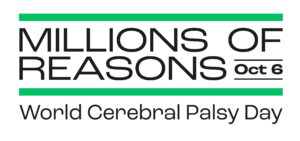Emily Prior, an 11-year old model with cerebral palsy, is changing the face of advertising. “I just keep showing people how disability CAN be included”.
“I am trying to make sure that people with disabilities are seen in advertising, TV and film and that everyone is being included. I like that people can see what my disability looks like because I am proud of my disability.”
This is one remarkable girl on a mission.
Emily lives in Australia and by the time she was eight years old, she was acutely aware of the a lack of representation of people with disabilities in mainstream media, especially advertising. She definitely did not see other children with cerebral palsy like her in catalogues or magazines.
“She obviously recognised the very exclusionary messages in advertising and this was clearly having a significant effect on her self-esteem, her sense of belonging and her identity,” explains Emily’s mum Jen.
“She didn’t see herself being represented, she didn’t see disability being represented, she only saw that the world around her was telling her she didn’t belong.”
When her mum asked her if she wanted to change this, Emily’s answer was a resounding yes.
“People have disabilities. It is who we are. People with disabilities do the same things as everyone else. They go shopping, they play sports, they go to school, the beach but you wouldn’t know that if you looked at catalogues or on TV or movies. We all need to be included,” says Emily.
Getting started
No stranger to being in front of a camera, Emily had previously been the face of the West Australian Charity Fundraiser Telethon and had been involved in other disability-specific marketing.
However, getting started on her dream of being a model was not an easy process.
“Unfortunately the attitudes and unconscious bias towards disability means that Emily (and other disabled models) are often denied opportunities and access to participate in the advertising industry,” says Jen.
Emily and her team put a lot of work into building a portfolio via Instagram in order to showcase what disability could look like in mainstream media. This was an intensive process that involved learning how to set up photo shoots, finding locations, styling and make-up.
“We found mentors to help guide us and we just started,” Jen continues.
We used our voice, along with our photographs to tell the story – the more you tell your story, the more people start to listen.”
They started approaching Australian brands encouraging them to include disability in their advertising. After entering many Brand Rep Searches, Emily was finally taken on by Australian brand Poppy and Flynn.
Around this time Emily also became an Ambassador for Starting with Julius, a project promoting inclusion in Australian advertising and media. Through them she connected with Australian brands such as Rock Your Baby and Alex & Ant.
Emily’s mission gains momentum
When Emily won a competition through Betts Kids Shoes, her mum decided to capitalise on the opportunity and ask if they would consider being more inclusive in their advertising.
To her surprise they embraced the idea.
Emily went on to feature in their advertising campaigns for two years.
One of Emily’s proudest achievements is becoming Target Australia’s first disabled cover girl. She has also appeared in three more catalogues as well as front of store and in store advertising.
“This had a profound effect on Emily,” says Jen. “Not only did she see herself being represented, but she received so many emails and messages from other children and their parents who had seen the advertising.
“For their children to see a child just like them gave them a sense of belonging, they were able to recognise and see themselves in mainstream advertising.”
To date Emily has worked with around 25 brands, as well as disability related organisations and other companies. She works events, appears in catalogues, look-books, in-store advertising and has appeared on TV, radio commercials and podcasts.
When inclusion is the norm
Of course, there are still barriers to overcome.
Living in Perth in Western Australia can make it difficult, as travel is usually required to attend castings. However, social media helps overcome this geographical obstacle, allowing Emily to connect with people and brands all over the world.
But there remains a long way to go until inclusion of disability in advertising is the norm.
“We continue to write numerous emails and make contact with brands, casting agents and organisations who sometimes still ignore us,” says Jen.
“Deciding not to reflect people with disability in advertising and mainstream media continues to reinforce those very attitudinal barriers that stand in the way of people with disability participating with the same opportunity and without discrimination.
“Advertising needs to reflect the world in which we live, and Emily needs to see herself and kids like her being represented. When brands are inclusive they are sending messages to their customers, including disabled customers and others who have strong connections to someone with a disability, that they recognise and value diversity, inclusion and human rights.”
